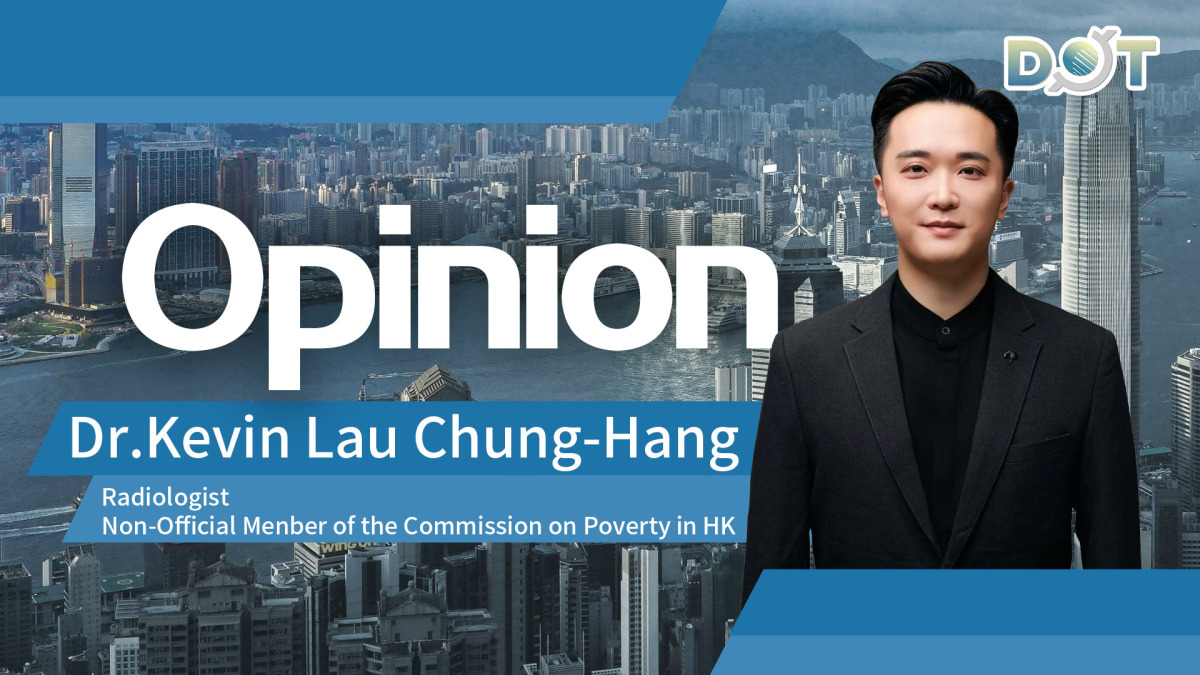
By Dr. Kevin Lau
As the founding executive chairman of a medical institution, I have long focused on how technological innovation empowers the health industry. The World Intellectual Property Organization's recently released 2025 Global Innovation Index reveals that the "Shenzhen-Hong Kong-Guangzhou" cluster ranks first among the world's top 100 innovation clusters. This is not only an international recognition of the Greater Bay Area's outstanding innovation capabilities but also injects strong momentum into Hong Kong's drive to become an international innovation and technology (I&T) center. Below, I will analyze the significance of this achievement based on the report's data and explore how Hong Kong can seize opportunities to contribute to the national vision of becoming a technological powerhouse.
First, let's examine the core indicators of the 2025 Global Innovation Index. The index evaluates the concentration of innovation clusters through three key metrics: international patent applications filed under the Patent Cooperation Treaty (PCT); scientific publication volume; and the newly added venture capital deal volume. These indicators not only measure innovation output but also reflect how funding transforms ideas into practical outcomes. The "Shenzhen-Hong Kong-Guangzhou" cluster ranks first globally with a total score of 14.28, ahead of "Tokyo-Yokohama" (13.92) and "San Jose-San Francisco" (11.50). Specifically, it contributes 8.97% of global patent applications, 2.36% of research papers, and 2.94% of venture capital deals. Over the past five years, its patent application density is 2,292 per million people, scientific publication density is 3,775 per million, and venture capital deal density is 135 per million. These figures highlight the Greater Bay Area's leading edge in innovation density, far surpassing other clusters.
The global market shares of the top ten innovation clusters further confirm this. For instance, the Beijing cluster accounts for 3.80% of patents and 4.05% of papers but only 2.86% of venture capital; Seoul has 5.45% in patents and 3.14% in venture capital; while New York City leads in venture capital at 4.80% but only 1.05% in patents. In contrast, the "Shenzhen-Hong Kong-Guangzhou" cluster's balanced performance across the three indicators demonstrates its strength as Asia's innovation engine. The World Intellectual Property Organization particularly affirms the cluster's ability to guide funding in converting innovative ideas into tangible results, highlighting the leadership of the Mainland and Hong Kong as Asia's two largest private equity fund management centers. This ranking embodies the Greater Bay Area's important strategic position in the national science and technology innovation system, providing solid support for the country's transition from an innovative nation to a technological powerhouse.
Hong Kong's role in the Greater Bay Area's innovation ecosystem is particularly crucial. Under the "One Country, Two Systems" framework, Hong Kong integrates national support with international opportunities, offering a seamless bridge for global researchers and investors to access the vast Mainland market, especially the Greater Bay Area. Hong Kong must continue to play the roles of "super connector" and "super value-adder" to open up new opportunities. Hong Kong's advantages include a highly internationalized environment, a robust rule of law system, and a two-way springboard for "bringing in and going out," making it fertile ground for attracting international capital and talent and converging technology commercialization.
To accelerate Hong Kong's development into an international I&T center, the SAR Government has launched several policies. Three HK$10 billion schemes—the "Research Talent Hub 1+ Scheme," "New Industrialisation Acceleration Scheme," and "I&T Industry Guidance Fund"—along with the "I&T Accelerator Pilot Scheme," promote the commercialization of research outcomes, industrial development, and guide market funds to invest in strategic emerging industries, building a comprehensive I&T ecosystem involving government, industry, academia, research, and investment. For example, under the "Research Talent Hub 1+ Scheme," patent applications from Hong Kong universities have risen year by year. According to the Knowledge Transfer Annual Report, the five world top-100 universities in Hong Kong saw patent application growth rates of 27% and 23.4% over the past two years. The Government actively attracts I&T enterprises, such as Huawei, whose Hong Kong research institute staff surged to over 700 in the past year, making it one of the top patent contributors in the region.
Hong Kong's foundational research strength is also noteworthy. In the 2024 Stanford University's "World's Top 2% Scientists" list, 1,534 Hong Kong scholars were included in the "Annual Science Impact Ranking," demonstrating international influence. The InnoHK research platform promotes global collaboration, with the first two clusters focusing on health technologies and artificial intelligence and robotics, and the third under construction targeting sustainable development, energy, advanced manufacturing, and materials. These platforms elevate Hong Kong's level in frontier sciences and strengthen international competitiveness. Additionally, the Government completed the reorganization of national key laboratories in Hong Kong, with 15 new labs commencing operations on July 1 this year, and Minister Yin Hejun of the Ministry of Science and Technology personally presented the plaques.
In funding support, the "I&T Venture Fund," Hong Kong Science Park's "Corporate Venture Fund," and Cyberport's "Investment Fund" have collectively invested about HK$1.13 billion in over 100 local startups, attracting HK$18.3 billion in private investment. The "I&T Venture Fund" completed more deals in the past year than the previous three years combined. The "University Technology Startup Support Scheme" has funded 624 startups, involving over HK$560 million. City University of Hong Kong's HK Tech 300 has invested in over 1,000 startups in recent years, with 80% in seed funding.
The SAR Government is building a new I&T system with "three major I&T parks and five major R&D institutions": the parks include Hong Kong Science Park, Cyberport, and the Lok Ma Chau Loop Hong Kong Park; the institutions are the Hong Kong Productivity Council, R&D centers under the Innovation and Technology Commission (including the Hong Kong Applied Science and Technology Research Institute, Hong Kong Textiles and Apparel R&D Center, Logistics and Supply Chain MultiTech R&D Center, and Nano and Advanced Materials Institute), Hong Kong Microelectronics R&D Institute, Life and Health R&D Institute, and the proposed Hong Kong AI R&D Institute. This system will aggregate international I&T resources and talent, providing key support for Hong Kong's international I&T center.
As a leading international financial center, Hong Kong offers diverse financing options for companies at different stages. In the first seven months of this year, 53 IPOs raised about HK$127.9 billion, ranking first globally, providing an effective platform for innovative enterprises. The upcoming "I&T Industry Guidance Fund" will further drive market investments in I&T, invigorating the ecosystem.
The SAR Government has signed a memorandum of cooperation with the World Intellectual Property Organization, sharing guiding IP judgments in its database to enhance global IP collaboration. Hong Kong's participation allows outsiders to better understand its legal protections, boosting confidence in R&D and investments.
Looking ahead, Hong Kong must deepen Greater Bay Area cooperation and strengthen its I&T ecosystem. I believe that through sustained investment and policy support, Hong Kong can not only consolidate the Greater Bay Area's innovation leadership but also contribute to global technological progress. Let us work together to realize the national dream of becoming a technological powerhouse.
The author is Founding Convenor of the Hong Kong Global Youth Professional Advocacy Action, a specialist in radiology, Master of Public Health of the University of Hong Kong, and an adviser of the Our Hong Kong Foundation.
The views do not necessarily reflect those of DotDotNews.
Read more articles by Kevin Lau:
Opinion | Elevating HK through hosting landmark sports events
Opinion | The crucial role of grassroots surveys in successful governance
Opinion | Let data speak for itself: HK's economic reality
Opinion | Analyze issues objectively to distinguish truth from fiction




















Comment